Jumping Up and Down Excited on an Indian Mound
Our family has special sayings for two very different emotions. One is “stomach hurting scared.” We started saying this after an incident when one of our daughters was babysitting at the home of family friends. She heard a noise at the front door and was afraid that someone was at the door. When she got back to our house and told us about it, she declared: “I was stomach-hurting scared.”
The other saying is mine. I like to say that I am “jumping up and down excited.” At times I feel stomach hurting scared, but at Shiloh Indian Mounds National Historic Landmark (which is on the grounds of Shiloh National Military Park), I was jumping up and down excited.
In writing about American history, I have especially enjoyed learning about the many nations who lived here before Europeans came. In Lesson 2 of America the Beautiful, I wrote about the Mound Builders.
Native nations in the eastern half of America built thousands of earth mounds in many shapes and sizes at different times in history. Before the arrival of Europeans, America had no horses, oxen, elephants, or other large animals to help the Mound Builders pull dirt to the places where they were building the mounds. As far as we know, they had no carts with wheels. Imagine how difficult it must have been for people to push and pull and carry all that dirt, perhaps with the help of no animal larger than a dog!
Archaeologists use the term Mississippian for the last group of people to build mounds in America. The Mississippian period lasted from about 1000 to 1550 AD. Mississippian farmers grew corn, squash, beans, and other foods. They made beautiful pottery, including funnels, bottles, pots, and bowls. They carved arrowheads and other useful and beautiful objects from stone. They traded with nations from the Rocky Mountains to the Atlantic Ocean and from the Great Lakes to the Gulf of Mexico. They also carved shells that came from the faraway Atlantic Ocean and the Gulf of Mexico. In Mississippian villages, the people often built either a temple or a home for their leader on top of a mound. Some mounds were tombs with jewelry, tools, and weapons buried inside.
The Shiloh battlefield includes mounds from the Mississippian period. Shiloh lies along the Tennessee River. Historians believe that a native town once sat on a bluff beside the river. Evidence indicates that a wooden palisade enclosed seven mounds and several houses. One of the mounds served as a burial ground; buildings probably sat atop the others. Residents of this town likely left the area around 1200 to 1300 AD.
Archaeologists believe that residents of the town at Shiloh interacted with people living in the important Mound Builder city of Cahokia in southern Illinois. Cahokia was a great city from about 800 to 1400. It was probably the largest settlement in what would later become the United States. Perhaps as many as 20,000 people lived there at one time.
Mississippians built 120 mounds in Cahokia. The base of Cahokia’s largest mound covers more than 12 acres and is larger than the Great Pyramid in Egypt.
The first archaeological excavation of the little town within the Shiloh park occurred in 1899. During the excavation, Cornelius Cadle found a large pipe made of red stone and shaped like a man who was kneeling. A similar style has been found at Cahokia.
I was excited when Ray and I, along with our daughter’s family, walked into the Shiloh park’s mound area. Grandchildren hurried to climb on the three mounds which were in the area we explored.

Park officials had marked off a large space near one of the mounds.
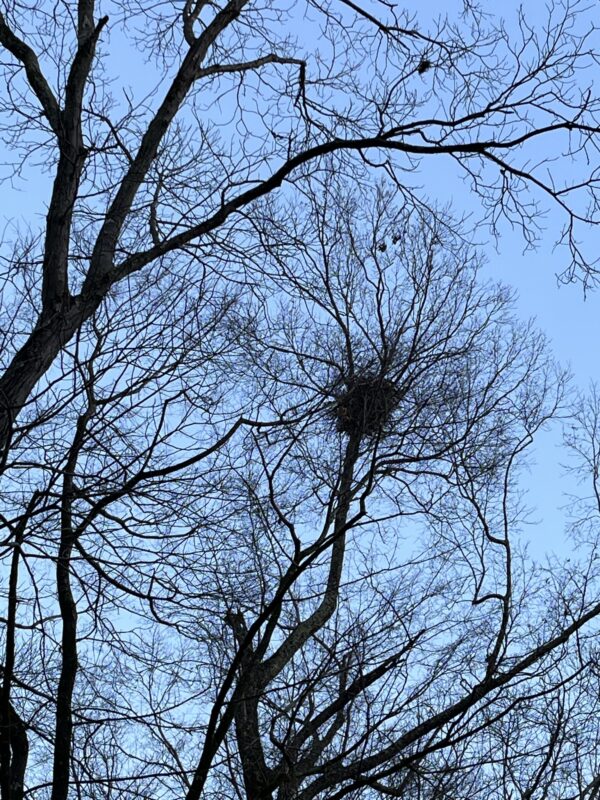
A sign told visitors to stay out of that space because an eagle had built a nest there.

We all climbed to the top of the farthest mound on a stairway constructed for visitors.
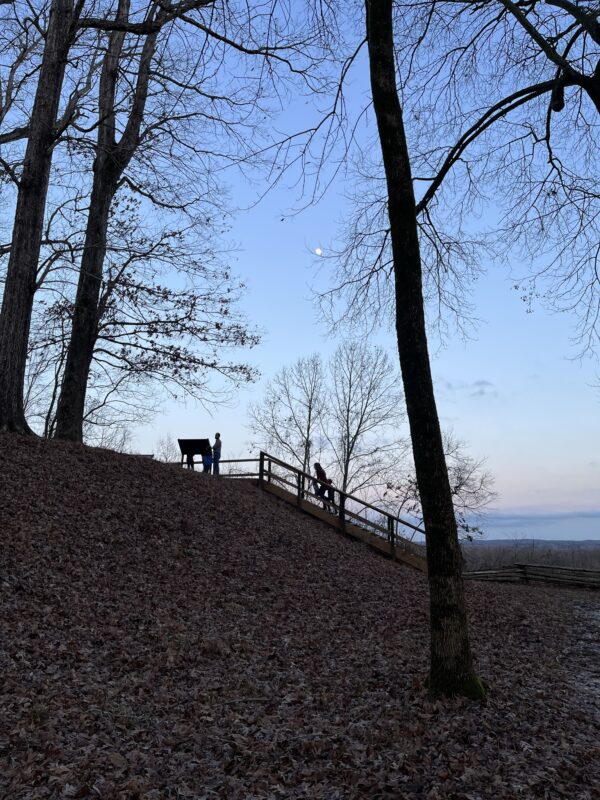
Standing atop that mound, I literally jumped up and down in joy over the history and beauty in view. To the east, I could see the beautiful Tennessee River which lay below the mound.

To the west, I could see the distant horizon where Ray and I had just enjoyed the remaining pink hues of the setting sun.
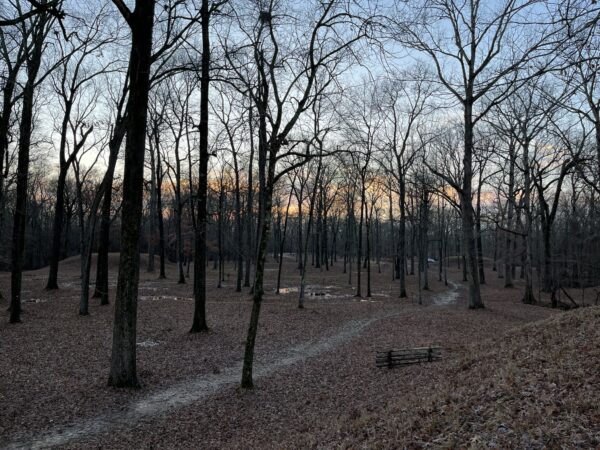
Between the mound and the horizon were the eagle’s nest and the two other mounds.
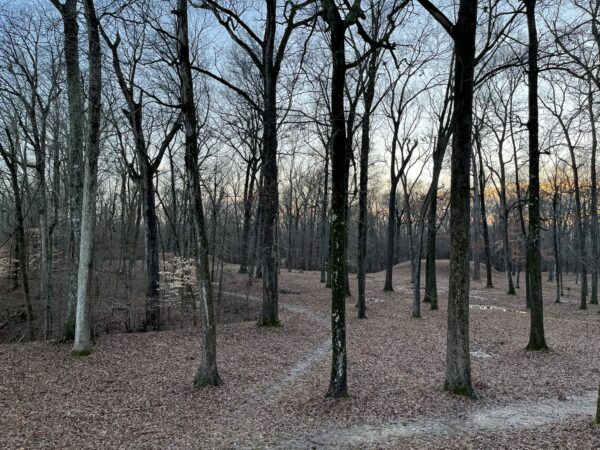
This National Park Service sign told the story of the red stone effigy pipe found there in 1899.
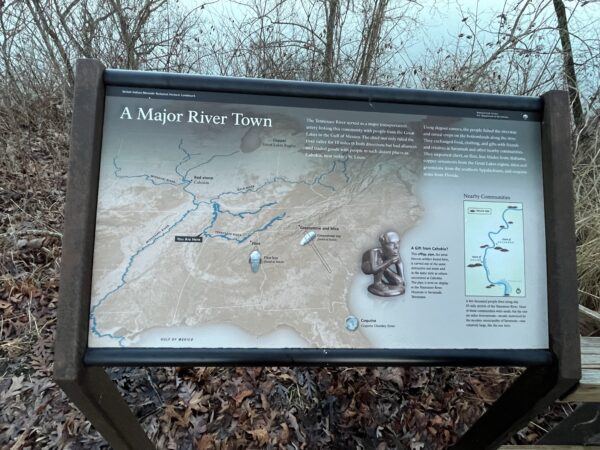
We climbed back down the stairs . . .
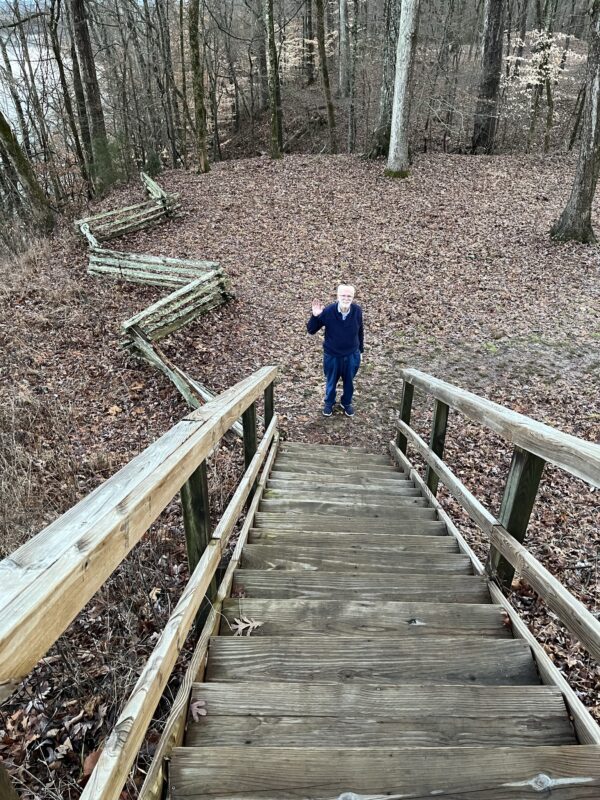
. . . and drove on to more history of the battlefield.
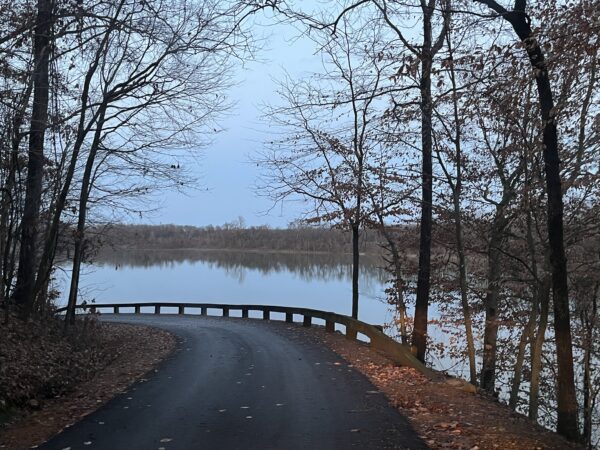
The native nations who lived at Shiloh and the men of the Union and Confederate armies who fought there have something in common with you and me and future generations. The Lord God made—and loves—us all.
. . . and He made from one man
every nation of mankind
to live on all the face of the earth,
having determined their appointed times
and the boundaries of their habitation . . .
Acts 17:26
Announcing the Be Happy Homeschooling Giveaway
Through the end of January you can enter a prize drawing by visiting our websites and social media channels. At the beginning of February we plan to randomly draw five winners of a Be Happy Homeschooling Set. Learn more about the contest here.

